Your Cart is Empty
FREE SHIPPING ON ORDERS OVER $100 !

Cyberpunk has become a major force in popular culture today. It is no longer just a subgenre of books and movies, but has become part of our daily lives.
This article will discuss its major impacts on the modern-day cultural environment with emphasis on fashion, music and entertainment.
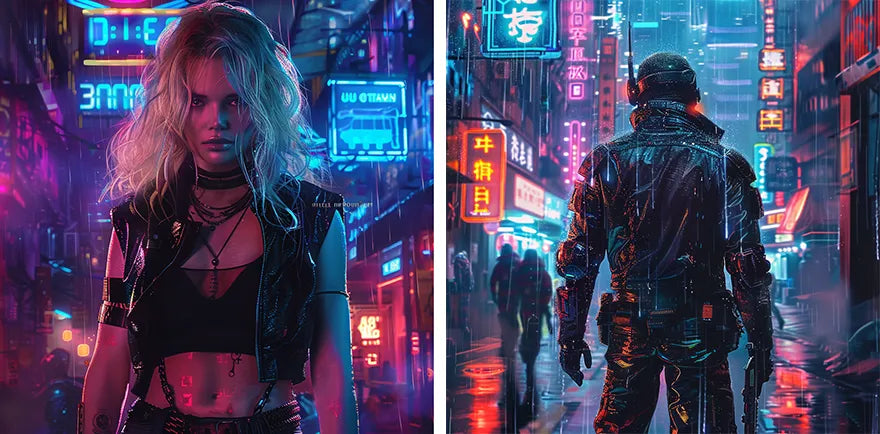
During the 1980s in science fiction writing, cyberpunk gave rise to dystopian futures that hovered between utopia and dystopia by combining dark societal decay with advanced technological wonders. The shiny technology amidst social chaos gives a representation of what the future may look like.
Through unfettered capitalism, rapid technological advancement and moral dilemmas – all key motifs which make this strange union of optimism and pessimism rich in creative forces such as artists, writers & filmmakers who have taken it across many other mediums.
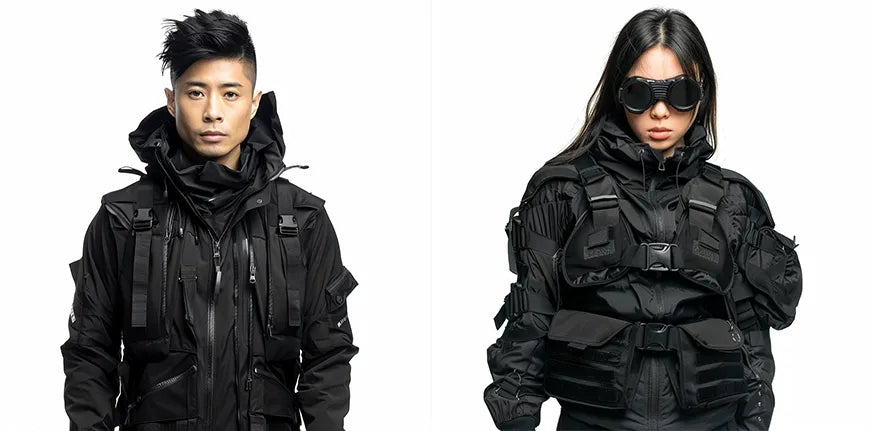
Fashion is always said to be a reflection of society. Never was this truer than during an era obsessed with cyberpunk aesthetics. Little by little it invaded haute couture circles making techwear synonymous with itself.
In fact, the cyberpunk vision has found its ideal match in techwear since techwear is known for being functional yet visually striking; therefore, fusing these two aspects into one style of dressing that suits both requirements perfectly makes much sense creativity-wise.
There is no hesitation when it comes to identifying cyberpunks’ signature whether they are extensive utility-focused design principles or clothing made from materials suitable for different climates which also provide defense against nature's wrath.
Tech-wear puts functionality first but does not dismiss aesthetic qualities—a heritage rooted deeply within traditions based around the experience of CyberPunk literature. Tech-wear appeals to followers because present-day designers are striving hard to merge utilitarian intentions with moody dystopian looks that define the trend.
For techwear brands, edgy fashion trends, functional clothing, and a cyberpunk ethos are a must for making clothes for any weather. In this way, these brands mimic the cyberpunk aspect of future technology that seems not too far away, but dated in a midwifery sense.
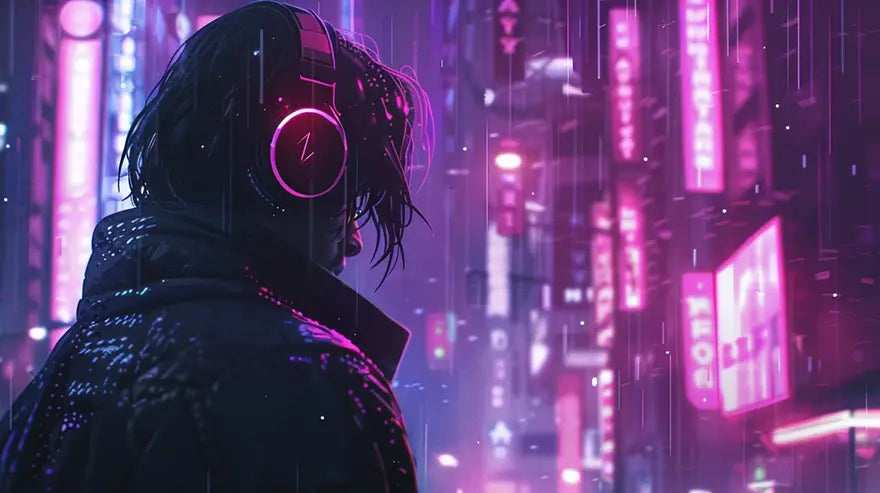
When it comes to music, the influence of cyberpunk is strong. It’s a type of music that was just as bold as its back alleys filled with rebellious hacker culture. It has also been increasingly incorporated into electronic music especially synthwave. The impact goes beyond mere beats in songs transforming their texture as well as modifying track lists even down to album covers. Thus, its hoary effect on contemporary music cannot be underestimated.
Synthwave - an 80s inspired genre – provides a backdrop for everything cyberpunk related. Its deep synthesized bass lines, atmospheric sounds and throwback drum machines epitomize the very core of what this sub-genre stands for.
Listening to its futuristic tunes with pulsating rhythm almost dripping with nostalgia makes perfect sense because they encapsulate the essence of such movies or games. In addition to iconic cityscapes perpetually shrouded in darkness at night-time, neon-lit dreamy eerie dystopia synths are something associated with cyber-punk soundtracks.
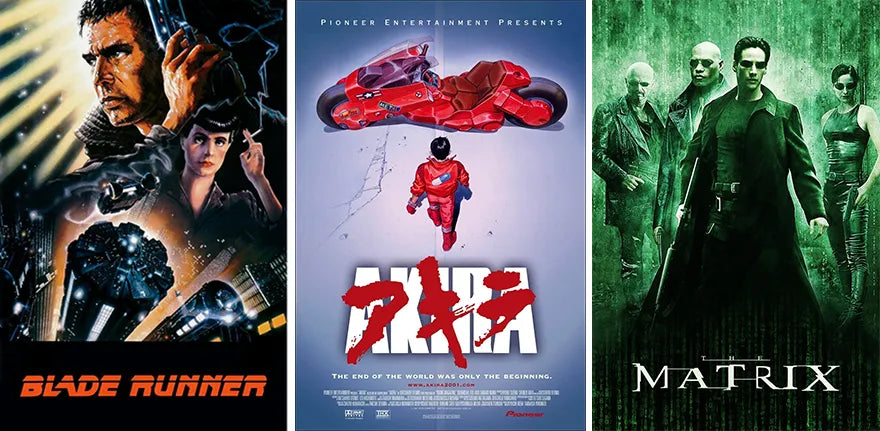
Film-making has been under the tight grip of the cyberpunk genre when it comes to visual storytelling. As a result, many science fiction films have adopted its looks and themes over the years.
Additionally, filmmakers have come up with a unique narrative style combined with rough neon-drenched visuals that make it an ideal setting for their stories. Hence, this blend of high energy action scenes, dystopian settings, complex storylines and morally ambiguous characters in them has led to other creators being inspired as well.
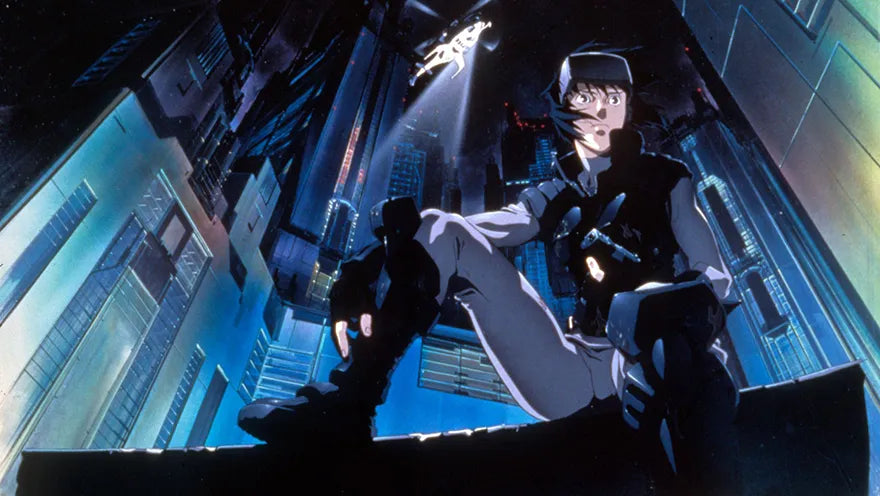
This means that traditional noir has undergone evolution through the introduction of elements from the cyberpunk genre resulting in so called cyber noir-a phoenix coming through in a different form altogether.
Such movies as Blade Runner (1982) and Ghost in the Shell (1995) display characteristics associated with cyber-noir such as seedy future locales; overall gloominess; morally ambivalent protagonists; and satirical social commentaries wrapped in visually lush packaging.
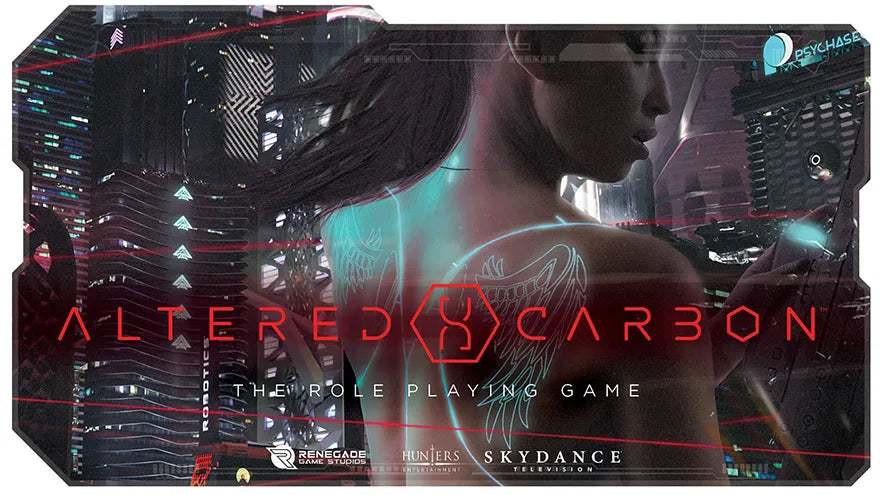
In addition to cinema, TV shows have also embraced the aesthetics of cyberpunk. Some examples include Altered Carbon or Black Mirror anthology episodes or Netflix’s adaptation of Ghost in the Shell that skillfully weave genre aesthetics into storyline arcs designed not just to entertain but also captivate audiences.
Set within cyberpunk worlds that allow for speculative futures which help us think about our relationship with technology, these TV programs are an escape.
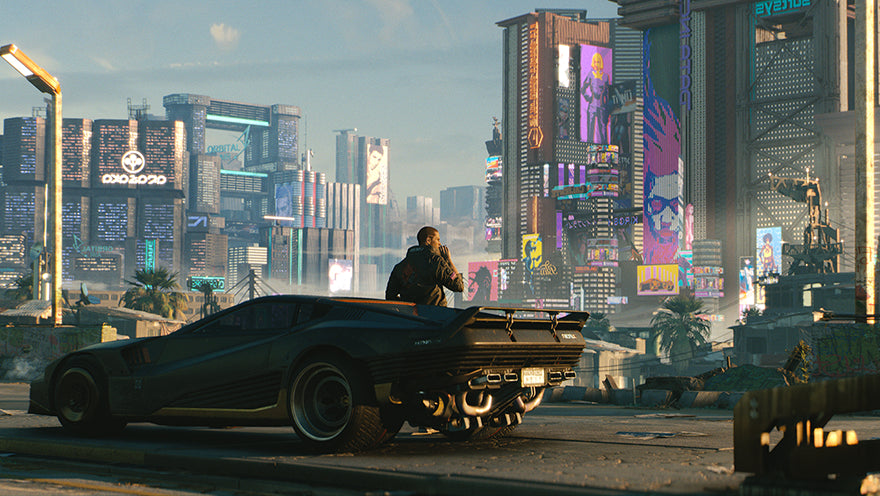
Immersion into their detailed worlds allows video games to explore dark corners of cyberpunk sub-genre like no other medium can do. These games are meticulously designed with cutting-edge graphics and multi-dimensional characters bringing about experiences beyond what is traditionally known as storytelling elsewhere within this category.
They simulate virtual reality thus allowing gamers to engage with both aesthetic aspects of this kind of fiction while playing through gripping narratives.
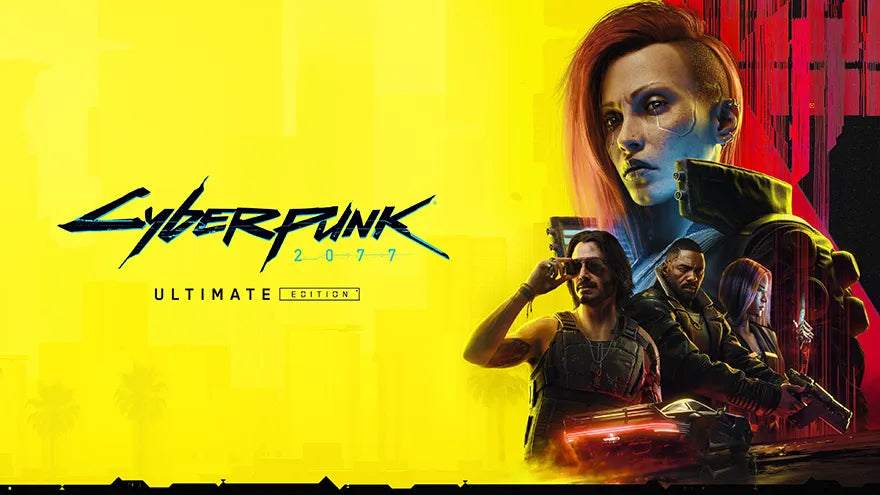
Cyberpunk 2077 despite its controversial release became the most spoken about game in the genre among casual gamers.
The expansive dystopian urban landscapes, intricate storytelling and the idea of navigating a technocratic society have made the cyberpunk genre more popular among players. Although it received mixed reviews, its influence on culture is undeniable.
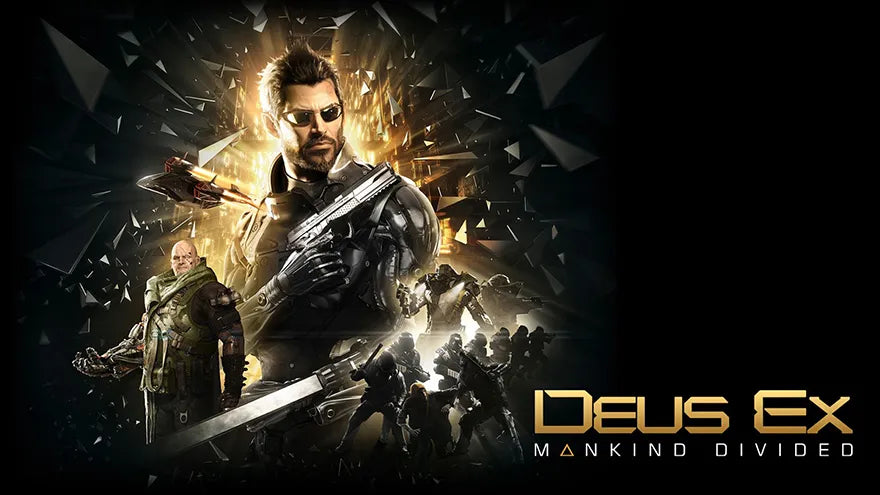
However, Cyberpunk 2077 is not a solitary example of cyberpunk’s impact on video games. Many other games too illustrate its core axiom of “high-tech, low-life.”
Leading titles such as Deus Ex or System Shock (the original entries) and Shadowrun (the tabletop adaptation) represent just a few out of many examples showing how widely spread this kind of gaming has become within various industries.
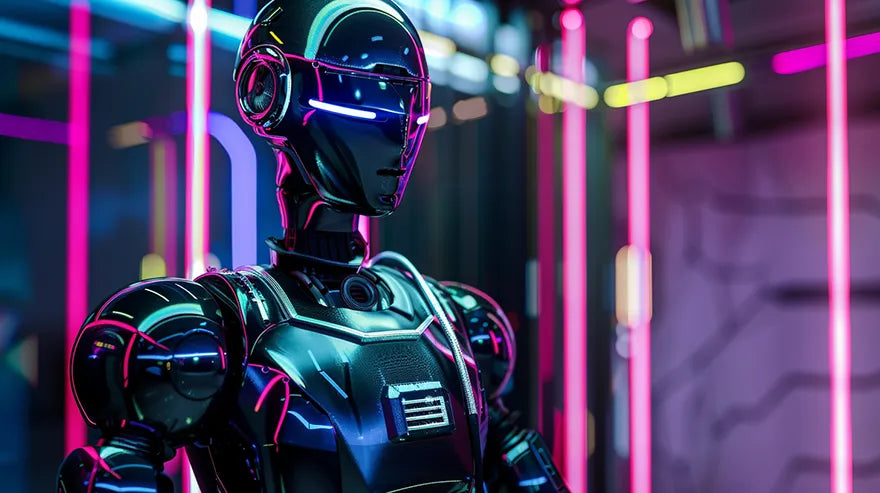
Lastly, let us take a brief look at today’s art scene through different locations in the world. Again, traces of cyber punk aesthetics are evident here. In particular neon lights, shiny chrome, humanoid robots and dystopian cityscapes demonstrate that contemporary artists use visual cues commonly associated with this type of fiction to put out some sort of vibes coming from dystopia narratives while reverberating with its aesthetics /philosophies.
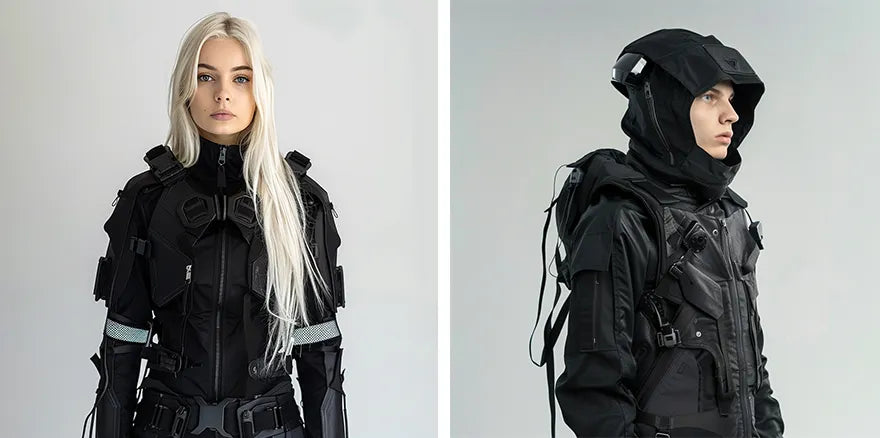
From fashion runways to music videos, television series to video games, everyday life is permeated by this once-niche world that is cyberpunk in ways most fascinatingly bizarre as well as intriguing. We currently exist within a world invented by the cyberpunks – one where technology blends into an attempt for creating a dystopian aesthetic.
One cannot overestimate the importance and strength of cyberpunk. It is a genre that projects future based on our contemporary world and mirrors technology, society and human beings’ perceptions towards it. Cyberpunk appears to be something more than just another type of fiction; it has become an immediate present life or reality for us.

Comments will be approved before showing up.
By Credit & Debit Cards, Paypal or Apple Pay
For all orders over $100
We're available 6 days a week
Reply within 24 hours
Not loving it?
Free return within 30 days